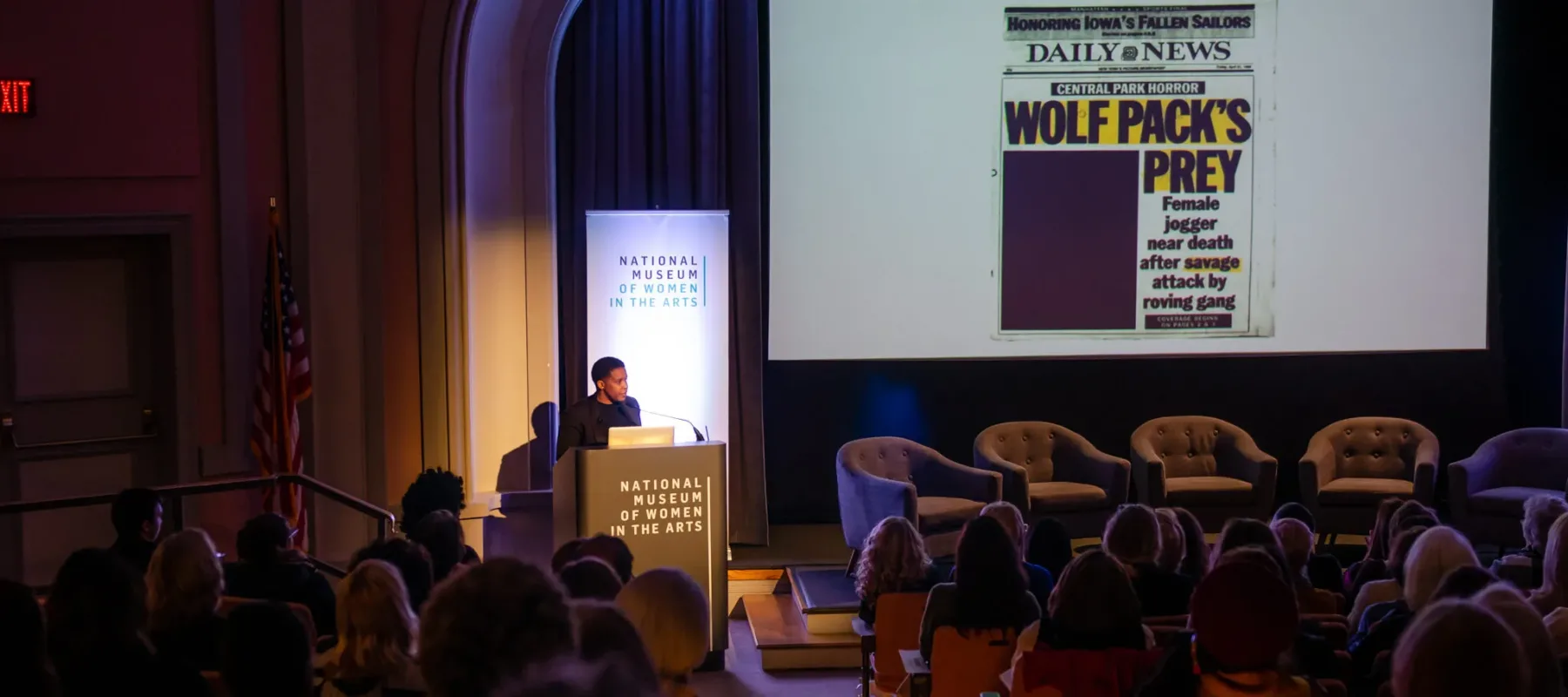On November 17, 2019, NMWA’s Women, Arts, and Social Change initiative gathered artists and activists, including Adjoa Asamoah, Jackie Payne, Kim Loper, and Alexandra Bell, for Fresh Talk: Art, Power, and the Vote—100 Years After Suffrage. The speakers explored the history and legacy of women’s suffrage and the ways that artists and activists can collaborate in the fight for social change.
As the 2020 Presidential Election nears, we revisit the powerful talks and wisdom shared by these women. This week, listen to Alexandra Bell, a visual artist with a background in journalism, explore how the news media shapes how we think about the world—and, consequently, how we vote.
“It’s important to think about power in media, who gets to talk to sources, whose voices are prioritized, and what viewpoints make it out there.”
—Alexandra Bell
Bell described the beginnings of her Counternarratives (2016–present) series, which explores bias in media. The project was born after the police killings of Philando Castile, Alton Sterling, Korryn Gaines, and Michael Brown. Bell observed that headlines about these killings were presented with frameworks that subtly suggested the victims were somehow responsible for their murders. By altering pages of the New York Times to offer a new perspective on the facts, Bell’s artwork teases out the dangers and pitfalls of “objectivity” in the news. She also critiques the Times’s soft-handed reporting on white men, including swimmer Ryan Lochte and Gavin McInnes, founder of the Proud Boys.
Bell uses wheat paste to post her large-scale works on public buildings. “These works are meant to invite people to engage and critique together. The news can be an individual and isolating experience in a way. I [hope] to get people to have discussions about topics that maybe they wouldn’t encounter or be open to discussing in the first place.”
Listen to the full presentation and conversation:
Fresh Take Bonus Clip:
Learn more about Bell’s work and how she sees it as a critical tool for reading the news.
